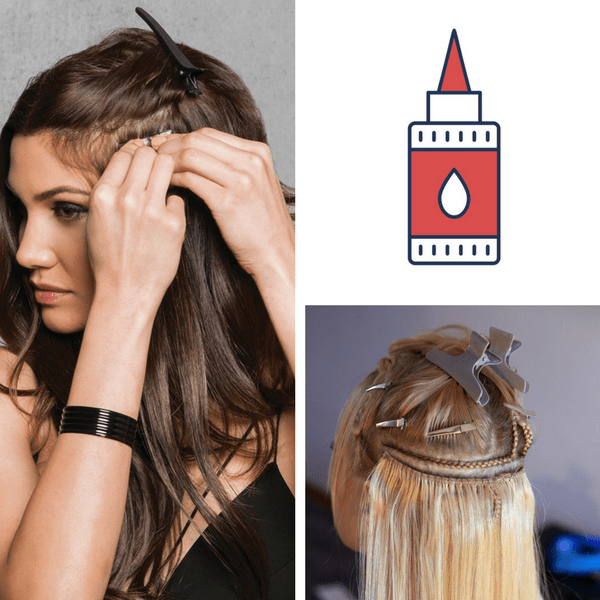The allure of voluminous locks or cascading waves often propels individuals toward the world of hair extensions. Among the myriad types available, clip-in hair extensions stand out due to their convenience and versatility. However, a nagging question persists: are clip-in hair extensions detrimental to your hair health? Delving into this subject involves understanding the dynamics of hair structure, extension materials, and the dos and don’ts of usage.
To begin, it’s essential to comprehend hair structure. Hair is made up of keratin, a protein that forms the hair strand. Healthy hair displays a smooth cuticle (the outer layer), which protects the inner cortex and medulla. When subjected to harsh treatments or improper care, the cuticle can become damaged, leading to issues such as split ends and breakage. Thus, one vital consideration when contemplating clip-in extensions is their potential impact on the integrity of your natural hair.
Clip-in hair extensions typically come in various materials—synthetic fibers and human hair being the most common. Synthetic extensions are affordable and easy to maintain, but they lack the natural movement and luster of human hair. Human hair extensions, while pricier, offer a more seamless blend with your natural locks and can be styled with heat tools. However, the quality of hair extensions varies significantly. High-quality human hair extensions generally cause less damage compared to synthetic alternatives, making them a better option for those concerned with hair health.
Let’s explore the pros and cons of clip-in extensions with an eye toward hair health. On one hand, clip-ins can be a blessing for those with thinning hair or who desire an instant transformation without committing to a permanent solution. They can enhance volume, lengthen strands, and even introduce color without the need for chemical treatments. Moreover, because they can be removed daily, users have control over their hair exposure to potential stressors.
However, there are caveats. When improperly used, clip-ins can cause tension on the natural hair, especially if they are too heavy or if too many clips are applied in one area. This tension can lead to a condition known as traction alopecia—where hair continues to be pulled from the follicle, resulting in hair loss. Additionally, the attachment and removal process requires care; if done hastily, it may snag or break natural hair strands.
To mitigate risks, proper application and removal techniques are imperative. Begin by selecting extensions that match your hair type in both texture and weight. Start with clean, dry hair, and gently section the hair before attaching the clips. This can prevent excessive tugging on the natural hair. When removing the extensions, be gentle; avoid yanking and take your time. Detangling with a wide-toothed comb can also help preserve the health of your natural hair.
Another critical aspect to consider is maintenance. Just as you care for your natural hair, extensions require attention. Invest in sulfate-free shampoos and conditioners that nourish rather than strip essential oils. When not in use, store clip-ins properly—this prevents tangles and maintains their shape. Additionally, engaging in regular scalp care is essential. A healthy scalp fosters a conducive environment for hair growth. Using oils or scalp massages can invigorate the follicles while ensuring natural hair remains robust.
It’s also paramount to listen to your hair. If signs of distress arise—such as excessive shedding, breakage, or irritation—reassess your extension usage. Perhaps opt for lighter styles or reduce the frequency with which you wear them. Remember, less can often be more when it comes to hair health.
Diving deeper into the topic, the conversation around hair extensions often touches on emotional well-being. The confidence gained from having fuller hair can be monumental for self-esteem. For many, clip-ins serve as a tool for self-expression and personal style. While caring for your natural follicles is crucial, the psychological benefits of enhancing your look should not be wholly diminished. Finding a balance is the key here.
Finally, it’s essential to highlight that not everyone will experience the same effects when using clip-in extensions. Individual hair types, health conditions, and overall hair care routines play substantial roles in determining outcomes. Engaging in open discussions with hairstylists or specialists can provide tailored insights that cater specifically to your needs. Moreover, keeping abreast of evolving hair care solutions and products will help you make informed choices.
In summary, the question of whether clip-in hair extensions are bad for your hair may not yield a straightforward answer. Their impact is contingent upon various factors, including the quality of the extensions, the method of application, maintenance practices, and individual hair health. With mindful usage and proper care, one can enjoy the aesthetic benefits of clip-in extensions while preserving the vitality of their natural tresses. Ultimately, balance and awareness are your allies in weaving beauty and health into a harmonious relationship with your hair.
